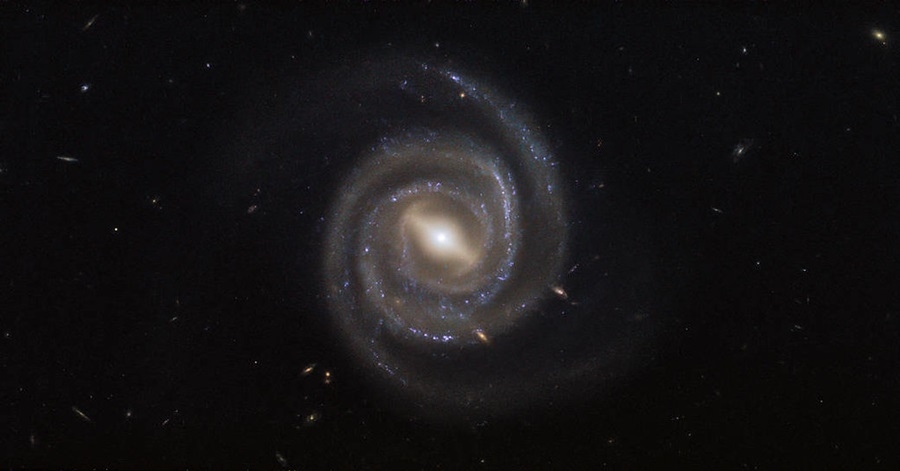For years, experts have speculated that a ninth planet has been orbiting our sun, but concrete evidence about the assumption has yet to surface. But a paper released last week proposed a new theory.
What if Planet 9 is actually a black hole? Or more specifically, a primordial black hole?
Similar to Planet 9, however, there is no evidence that primordial black holes exist as observing it can be notoriously difficult due to its size. Having said this, the possibility is indeed there, CNET reported.
How did the Planet 9 idea start?
The existence of Planet 9 was first introduced when astronomers noticed several objects in space floating in the same direction. This is unusual since with no planet to pull them into its orbit, those objects should float randomly.
Planet 9 is thought to have a mass between five or 10 Earths. At that size, astronomers would’ve already spotted it by now even if it’s at the edge of the sun’s pull.
But if Planet 9 turns out to be a primordial black hole, it would then explain why astronomers haven’t seen it yet. It would also explain the aforementioned clustering of space objects. Of course, this isn’t conclusive since experts haven’t found evidence of primordial black holes either.
More evidence needed to prove Planet 9 is a primordial black hole
And what are they anyway? Well, it’s hypothesized that primordial black holes may have formed shortly after the Big Bang where high-density conditions could’ve caused some regions to collapse forming these types of black holes. It is possible that our sun may have caught one into its pull, resulting in the unusual behavior of distant objects that was first attributed to Planet 9. It’s a stretch to be sure, but the idea is intriguing all the same.
Jakub Scholtz and James Unwin – the experts who penned the paper – proposed that the primordial black hole could be the size of a bowling ball. To spot it, Planet 9 would have to pass between Earth and a distant star, and if that star brightens momentarily – an event known as microlensing – it could add to the evidence mentioned earlier. Looking at the data gathered by the Optical Gravitational Lensing Experiment (OGLE), it has indeed recorded microlensing events. But this, too, isn’t conclusive just as the unusual moving pattern of the space objects isn’t conclusive, Forbes reported.
Image source: https://www.flickr.com/photos/nasahubble/39855066531



 Dark energy is one of the biggest puzzles in science and we're now a step closer to understanding it
Dark energy is one of the biggest puzzles in science and we're now a step closer to understanding it  Six space missions to look forward to in 2024
Six space missions to look forward to in 2024  The brain is the most complicated object in the universe. This is the story of scientists’ quest to decode it – and read people’s minds
The brain is the most complicated object in the universe. This is the story of scientists’ quest to decode it – and read people’s minds  The mystery of consciousness shows there may be a limit to what science alone can achieve
The mystery of consciousness shows there may be a limit to what science alone can achieve  Black hole, neutron star or something new? We discovered an object that defies explanation
Black hole, neutron star or something new? We discovered an object that defies explanation  Archeoastronomy uses the rare times and places of previous total solar eclipses to help us measure history
Archeoastronomy uses the rare times and places of previous total solar eclipses to help us measure history  Larger and more frequent solar storms will make for potential disruptions and spectacular auroras on Earth
Larger and more frequent solar storms will make for potential disruptions and spectacular auroras on Earth  Orbital resonance − the striking gravitational dance done by planets with aligning orbits
Orbital resonance − the striking gravitational dance done by planets with aligning orbits  Genetic diseases: How scientists are working to make DNA repair (almost) a piece of cake
Genetic diseases: How scientists are working to make DNA repair (almost) a piece of cake  Customizing mRNA is easy, and that's what makes it the next frontier for personalized medicine − a molecular biologist explains
Customizing mRNA is easy, and that's what makes it the next frontier for personalized medicine − a molecular biologist explains  What is minoxidil, the anti-balding hair growth treatment? Here’s what the science says
What is minoxidil, the anti-balding hair growth treatment? Here’s what the science says  Spacesuits need a major upgrade for the next phase of exploration
Spacesuits need a major upgrade for the next phase of exploration  Could a telescope ever see the beginning of time? An astronomer explains
Could a telescope ever see the beginning of time? An astronomer explains  Why some people don't trust science – and how to change their minds
Why some people don't trust science – and how to change their minds 































